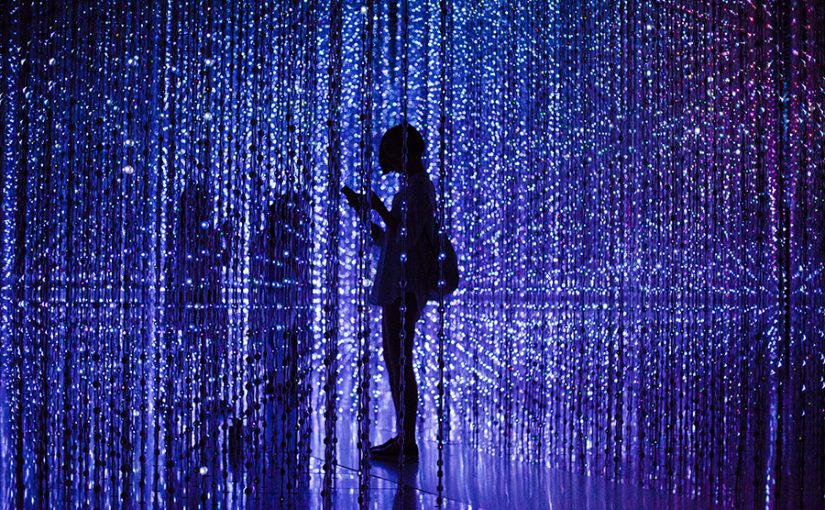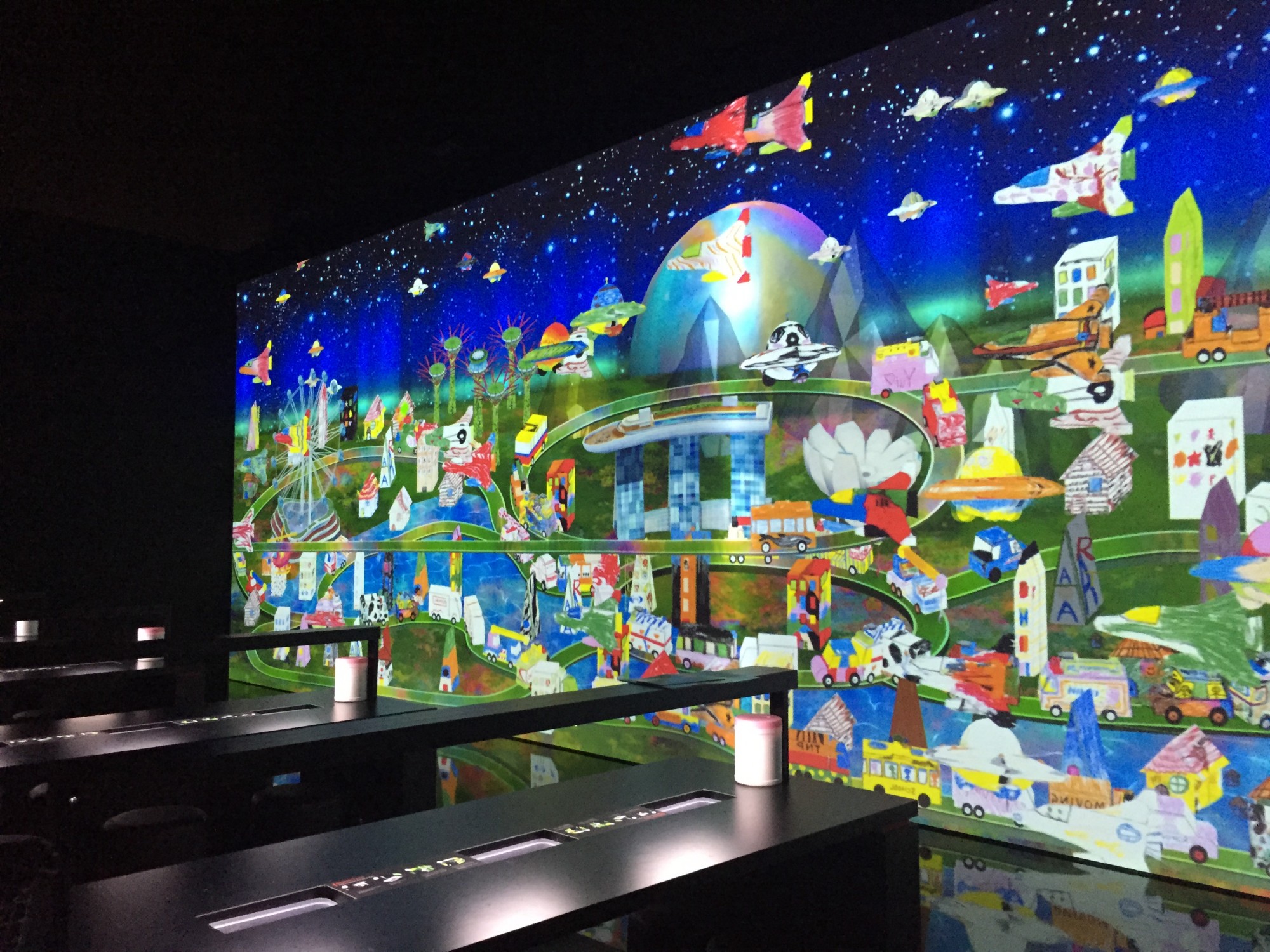Timothy Nohe’s presentation on Interactive Environment and Experience Design was unlike any other guest speakers’. It was interesting to listen to him share his experiences in his works and installations. His experiences also made me understand that to make an installation successful, you need more than just a designer, but a team of people from different fields of expertise.
Besides the usual slides that were presented, Timothy also brought along his interactive project to class and allowed us to interact with it. There was a mixer-like equipment connected to a screen and to activate the screen, it was through the means of connecting different jacks to different ports. Every different port connected, it will then produce a one-off pattern on the screen as well as to me, a very ‘sci-fi’ tone. I was very intrigued by the infinite possibilities one could have with this set up and I was actually very interested by the technicalities behind the project.
The project that he showed us in class made me know how advanced technology really is, similar to the Future World field trip. Another take away from his presentation was the minute factors that we tend to overlook when we work on our projects, such as weather-proofing our projects, maintenance issues, and also to ensure that our work does not fail under the heavy interaction from the public.






